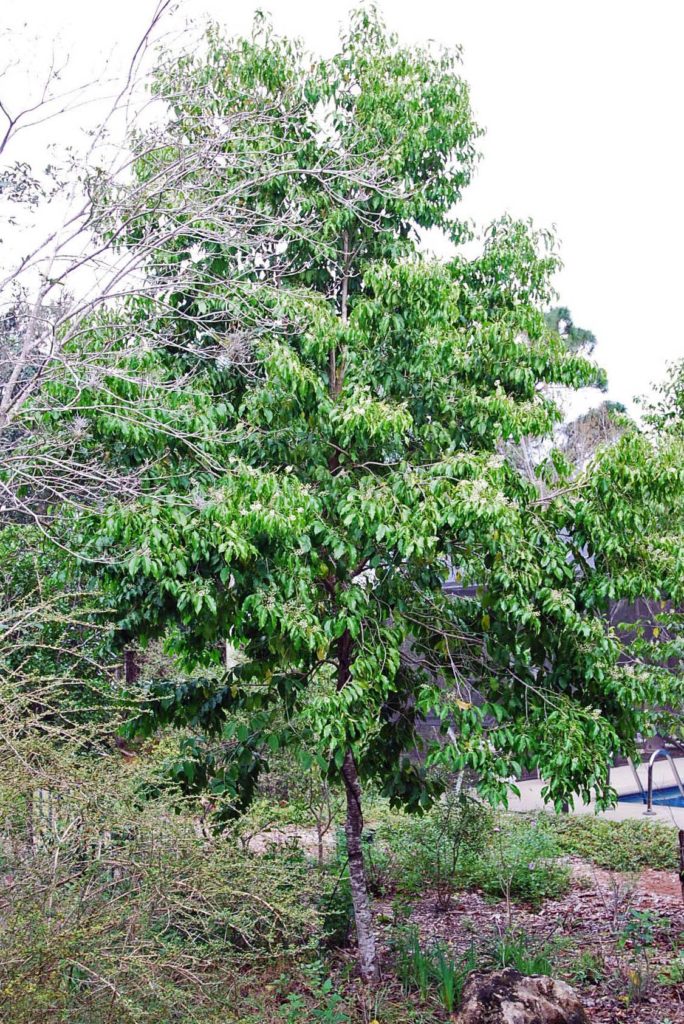
West Indian Cherry
Prunus myrtifolia
The West Indian Cherry is native to the Rocklands of Dade County from Long Pine Key to the Miami River. It normally grows to 35 feet and may reach 50 or more feet over many years. This is a fairly fast growing tree that looks like a small Ficus benjamina. It can be kept at any height with occasional pruning.
West Indian Cherry is tolerant of average soil, yet prefers some organic matter to retain moisture and provide nutrients. Salt air will burn the leaves and salt water will kill it. It is cold tolerant to eastern Martin County. I have seen nice specimens where it was planted on Sewell’s Point.
The fragrant white flowers appear in winter on a Raceme and the berries ripen by summer. It may also flower in the summer for a fall crop of fruit.
Male flowers are borne on the bottom and the female flowers on the top of the raceme. Wildlife eat the small cherries. These are bitter, due to prussic acid (bitter almond), and shouldn’t be eaten, yet a taste is OK.
Squirrels really like the berries and will visit the tree continually while in fruit. If you have a squirrel crazy dog, this can be a bit annoying.
Use this as an upper story tree and underplant with a background of mixed shrubs like Marlberry, Wild Coffee, Stoppers, Saw Palmetto, Locust Berry, Florida Boxwood or Blackbead.
Plant the foreground with low plants so that the trunk is not hidden. Try Snowberry, Coontie, Spider Lily, or a variety of wildflowers.
Other tall trees can be mixed with West Indian Cherry. These include Gumbo Limbo, Pigeon Plum, Lance Wood, Satin Leaf, Mastic, Paradise Tree, Redberry Stopper, Bahama Strongbark, Spicewood and Soldierwood. This is a narrow tree, so spreading trees like Wild Tamarind and Live Oak may overshadow it.
You may even be surprised to find a few of the seedlings coming up around the yard where the squirrels have planted them. This design help from nature is almost always welcomed here as it gives the property a more natural look.